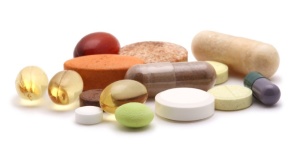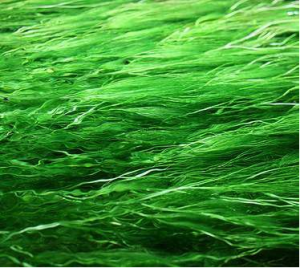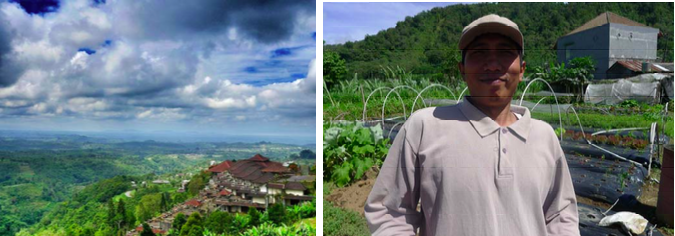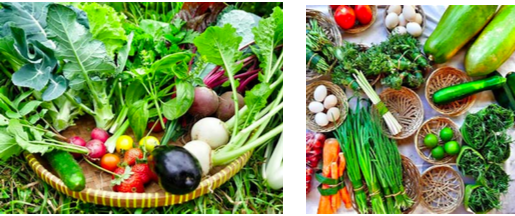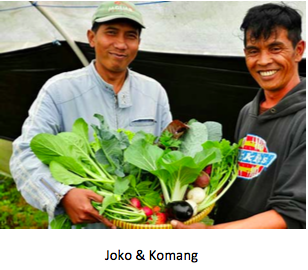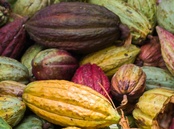EATING your way CLEAN with FRUITS vs JUICING – High Carb
New year is always a great time to kick start new projects, new programs, set goals, make healthier choices, start a dance or singing class, and to generally bring focus on new intentions for the year.
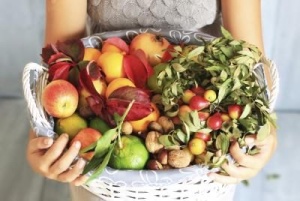
If you’re still recovering from the Christmas festivities, or have just had no time and are already back at work perhaps these tips can help you start today.
All of us have heard that the greatest thing we can do for our body and for that extra kick in motivation is to Alkalise!
If you are suffering from lethargy, have weight problems or water retention your body is probably overly acidic. When you alkalize your body through proper eating and healthy living, you can overcome all sorts of discomforts, reach your ideal body weight and literally have more energy for all the things you want to do.
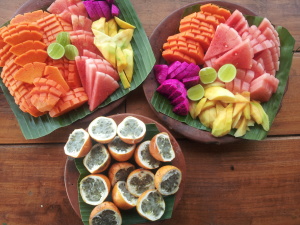 One of the most obvious signs of acidity is excess body fat. When your body is acidic, it tries to neutralise the acid. One of the ways it does this is to store excess acid in fat, which can lead to that puffy feeling. When you alkalize your diet, your body sweeps through and removes this buildup.
One of the most obvious signs of acidity is excess body fat. When your body is acidic, it tries to neutralise the acid. One of the ways it does this is to store excess acid in fat, which can lead to that puffy feeling. When you alkalize your diet, your body sweeps through and removes this buildup.
To alkalize you need to eat more alkalizing foods and fewer acidic foods. In this way, you can create a healthy diet that will help you reach your ideal weight without “starving” yourself.
Juicing and fasting / abstaining from food is one way. But time and time again its proving that for most people it disrupts their metabolism and only works as a quick fix rather than having long term success. Most people break a fast in desperation to satiate hunger and the unhealthy relationship to food is re-instilled.

So the new option to try is to eat your way clean!
All fruit is alkalizing, and so are all leafy green. Vegetables are next. But nuts, seeds and oils are on the border of being neutral acidy/alkalinity. If you focus on making sure you eat all alkalizing foods for each meal, guess what you will be on your way to an alkaline body very quickly.
On the opposite end of the alkalizing spectrum is the acidic side: sugary and manufactured foods, meats, fish, dairy products, bread and other cooked grains, drugs, alcohol and caffeine. Pork and Parmesan cheese are a few of the extremes. To neutralize the acidity of just one cup of coffee you need to drink 12 glasses of water!
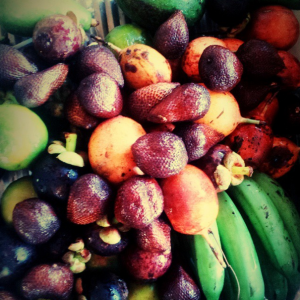 Most people get their daily calories from concentrated foods – too much protein, too much fat, and too much sugar sprinkled on top. These meals are generally smaller because they are caloric-ally dense and acidic.
Most people get their daily calories from concentrated foods – too much protein, too much fat, and too much sugar sprinkled on top. These meals are generally smaller because they are caloric-ally dense and acidic.
When we make the switch to high carb foods we need to eat more quantity. The trick is not to under-eat in calories otherwise the body goes into starvation mode and can wreak havoc to the metabolism. Under-eating is the biggest reasons why most people can’t sustain ‘diets’. Most, if not all basic bodily/brain functions require glucose, not eating enough ‘good carbohydrates’ will have the body screaming for the ‘dense/acidic’ foods to get its fix.
When you start making changes to alkalize the body, toxins will be released. You may feel ill temporarily, but push through it, once they are eliminated they are gone and a surge of energy will take its place. Make sure you drink at least two litres of purified water or fresh juices per day (you can include enemas or colonics – they aren’t necessary but they do speed things up in the early stages.) so your body can flush things out quickly.
Know Your Vitamin Pill – What’s In It?
If only taking a vitamin pill was the same as eating the real thing, like eating fruits and vegetables. Science wants us to believe that they can simulate anything and everything that nature has to offer. This might be true, to a certain degree but at what price? There always seems to be a tradeoff, a compromise, a side effect.
We were all made to believe that supplements are taken as a health insurance to improve your health, reduce the risk of chronic disease or condition, beat stress, lose weight, boost energy and the like. These are a few of the many promises the multi-billion-dollar pharmaceutical companies are trying to claim. But can vitamin pills really deliver the health and vitality they are promising?
Let’s take a quick review of the pros & cons of dietary supplements, and compare naturally occurring vitamins and their synthetic counterparts.
Vitamin E, in foods, is effective against ageing, oxidative stress, restless leg syndrome, diabetes, cataracts and a host of other ills. Vitamin E in its synthetic form is petro-chemically derived, and can cause endocrine disruption.
Magnesium stearate has been shown to cause kidney stones and liver abnormalities. Since it is made by hydrogenating cottonseed oil, you risk consuming pesticide residue. Cottonseed oil has the highest content of pesticide residue of all commercially produced oils.
Supplemental Vitamin Pills are not what it usually tells you on its label.
Common fillers found in Vitamins:
BHT – This fat-soluble compound is used in jet fuels, rubber, petroleum products and embalming fluid. Research has linked BHT to bladder cancer, DNA damage, and gastric and lung cancer.
Boric acid – An antiseptic, insecticide and flame retardant. It is also connected to DNA damage.
Synthetic vitamin A – Petro-chemically derived product capable of causing birth defects.
Cupric sulfate – A herbicide, fungicide and pesticide.
Stearic acid – Prepared synthetically by hydrogenation of cottonseed and other oils, it contains pesticide residue. It is added as a lubricant and to hold tablets together.
Maltodextrin – This sugar is obtained by hydrolysis of starch. Used to add texture and as a flavour enhancer.
Modified maize starch – This filler is a derivative of corn that has been chemically altered to dissolve quickly and serves as a thickener. Most corn is GMO.
Sodium benzoate – Synthetic chemical used as a preservative. Can damage mitochondrial DNA.
Hydrogenated oil – Hydrogenation is the process of adding hydrogen gas to liquid oils. Hydrogenation leads to trans fats which contribute to fat-clogged arteries.
Potassium chloride – Colourless, odourless powder used to improve fermentation. Intestinal ulcers may occur with oral administration. Larger doses can cause gastrointestinal irritation, weakness and circulatory collapse.
They sit on the grocery store aisles, appearing rather innocent. They are clear and odorless – mainly because they have been bleached and deodorized with chemicals after high-heat processing has turned them rancid. And yet they are actually touted as “health foods” that can save your heart.
They are polyunsaturated oils such as soy, canola and corn oil. They are industrialized oils, and they continue to damage the health of virtually all of us.
Why is polyunsaturated fat bad for your health?
The main difference between polyunsaturated fat and monounsaturated fat (such as coconut oil) is the structure. Monounsaturated fatty acids are linked by one double bond, but polyunsaturated fats are linked by multiple double bonds. This structure is unstable and wreaks havoc on the cells in your body. It contributes to oxidation and free radical damage in the body, which is linked to heart disease, cancer, Alzheimer’s Disease, autoimmune diseases and premature aging.
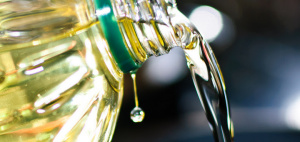 The instability of polyunsaturated fats is especially volatile during any kind of processing. Even small amounts of light, moisture, air or heat damage polyunsaturated fat. These oils cannot withstand exposure to heat when used for cooking, but they are still the main choice for restaurants and fast food joints because they are cheap and the claim “cooked in vegetable oil” sounds healthier to customers. The truth is that cooking with these oils makes them even more dangerous when consumed.
The instability of polyunsaturated fats is especially volatile during any kind of processing. Even small amounts of light, moisture, air or heat damage polyunsaturated fat. These oils cannot withstand exposure to heat when used for cooking, but they are still the main choice for restaurants and fast food joints because they are cheap and the claim “cooked in vegetable oil” sounds healthier to customers. The truth is that cooking with these oils makes them even more dangerous when consumed.
Another concern about consuming high levels of omega-6 fatty acids is they may interfere with the body’s production of prostaglandins. This can cause many adverse conditions in the body, including blood clots, sterility, poor immunity, indigestion, and cancer.
Too much omega-6 fatty acids can also interfere with the use of the very important omega-3 fatty acids in the body. And since polyunsaturated oils are used almost exclusively in conventional processed foods, it’s very easy for people to take in far more omega-6 fatty acids than their body can use. The omega-6 fatty acids in these oils essentially crowd out the omega-3’s, leaving health to suffer as a result.
What about the claims that polyunsaturated oils are good for your heart?
Some experts have advised the public to toss out traditional cooking fats such as coconut oil, and replace them with polyunsaturated oils. They claim this will save your heart, but heart disease is more rampant than ever, while we virtually soak our foods in polyunsaturated oils.
Historically, the evidence is hard to miss. Heart disease was a rare occurrence when most cultures consumed mainly saturated fats such as coconut oil, palm oil, butter, tallow and ghee. The rate of heart disease began to skyrocket in the mid-20th century – about the time that cheaply manufactured polyunsaturated oils became popular.
Reference:
Take Control of Your Health and Escape the Sickness Industry by going to
Elaine Hollingsworth’s website ~ She is the
Director of the Hippocrates Health Centre of Australia. Actively promoting truthfulness, and is a modern day pioneer of health and vitality.
http://doctorsaredangerous.com/book_index.html
Sonja Eberhard
Chemical and heavy metal dangers seem to be lurking everywhere you turn in the 21st century!
Pesticides coat much of our fresh food supply, chemical by-products from manufacturing are routinely dumped into our air and water, aluminum, and mercury, broken energy light bulbs and amalgam fillings in your teeth may be releasing mercury into your body with every bite of food you take!
In fact, acceptable levels of many poisons are allowed to come into your home through your drinking and bathing water, including fluoride, chlorine and low levels of many heavy metals.
It doesn’t take much imagination to see that your body too is under attack from environmental pollution every single day.
You can try to protect yourself and combat this hazard by eating foods that are free of pesticides and chemicals, but you simply cannot entirely remove all sources of toxins from your environment. The damage to our world is just too widespread and pervasive. You have to take it upon yourself to take measures to protect yourself and your family from this toxic world, and one of the best natural sources for moving these toxic materials out of your body is a whole-food based, green algae called Chlorella.
To address the harmful and unwanted chemicals your body picks up through the food you eat, the air you breathe, and the water you drink, it is wise to develop a proactive plan. One of the most powerful parts of this plan is detoxification of the toxins you may have already built up inside your body.
Your body is naturally able to remove many of the harmful pathogens, chemicals and poisons you may come into contact with in the environment. That’s how we are all designed.
But in the 21st century, we’re seeing an explosion of accumulated toxin-related diseases like cancer, auto-immune dysfunction, brain disorders like autism, Alzheimer’s and Parkinson’s, nerve disorders and more common ailments like depression, learning disabilities and fatigue. It can become relatively easy to overwhelm your body’s ability to remove many of these toxins. Symptoms of toxic build-up due to chronic metal exposure include:
Fatigue
Digestive distress, and reduced ability to properly assimilate and utilize fats
Aching joints
Depression
Impaired blood sugar regulation
Female reproductive problems
Just to name a few.
Solution
Infrared Sauna
There are ten to 100 times more toxins in your fat than in your blood, so one of the best ways to remove toxins is to decrease your body fat. That really is your first defense. Choosing the right foods and exercise are key here. After that, one of the most effective detoxification strategies I know of is the use of an infrared sauna. This can be done for about one hour daily for a month. Remember, it’s important to hydrate well before and during the sauna treatment to avoid dehydration.
Additionally, you can exercise for 30-60 minutes immediately prior to help liberate some of the toxins from your fat.
Chlorella as a Powerful Detoxification Tool
One of the most exciting nutritional resources available today to help your body naturally fight environmental pollution is a whole-food based supplement called Chlorella. Chlorella is actually one of the most widely used supplements in the world, where over 10 million people use it regularly.
You should always start any detox with Chlorella gradually, taking just a small amount at first to see how your body tolerates this powerful detoxification tool. Some people also report benefits from beginning a detoxification by first eating small amounts of cilantro for a few days. Cilantro also promotes a detoxification response in your body, but at a less intense level — which may help your body ease into a smoother detoxification response from chlorella.
One of the reasons Chlorella is so high on the list of eliminating heavy metals, is its natural detoxification abilities. Chlorella is a “green food,” a single-celled, micro-algae that is about two to ten microns in size. It’s very small. It is this small size combined with its unique properties that make it such a useful detoxification tool. Its molecular structure, allows it to bond to metals, chemicals and some pesticides.
When Chlorella is taken into your body, its natural action will bind it to lingering heavy metals, chemicals and pesticides found in your digestive tract, which is your body’s pathway to your bloodstream where these harmful toxins are delivered and deposited into your body’s cells.
So Chlorella first and foremost will help your body eliminate unwanted metals and toxins. But it does more than that.
Chlorella is uniquely designed to not bind to the minerals your body naturally needs to function optimally. It does not bind to beneficial minerals like calcium, magnesium, or zinc. It’s almost as if Chlorella knows which metals belong in your body and which chemicals need to be removed. Supplementing with Chlorella is like unleashing a tiny army inside your body to fight the battle of removing toxins from your tissues and ushering them back outside your body where they belong.
Chlorella is such a powerful detoxifier because it is rich in chlorophyll, which is known to:
Aid you in processing more oxygen
Cleanse key elimination systems like your bowel, liver, and blood
Help purify your blood and clean away toxins
Aid you in promoting optimal blood pressure
Support elimination of molds in your body
Help neutralize bad air you might breathe in
Promote growth and repair of your tissues
Chlorella is actually very useful even beyond detoxification, and its range of health benefits includes:
Boosting your immune system
Improving your digestion, especially if constipation is a problem
Providing B vitamins from an animal source
Enhancing your ability to focus and concentrate
Increasing your energy levels
Balancing your body’s pH
Normalizing your blood sugar and blood pressure
Reducing your cancer risk
Freshening your breath
You should always start any detox with Chlorella gradually, taking just a small amount at first to see how your body tolerates this powerful detoxification tool. Some people also report benefits from beginning a detoxification by first eating small amounts of cilantro for a few days. Cilantro also promotes a detoxification response in your body, but at a less intense level — which may help your body ease into a smoother detoxification response from Chlorella.
At the Recipe page you’ll find a magical recipe I have been working on to combat the heavy metal blues. Enjoy your miracle smoothie!
THE TEAM : The process of working collaboratively with a group of people in order to achieve a goal.
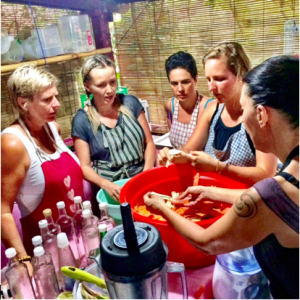 I have to admit that when I started writing this blog I wasn’t sure how to approach it.
I have to admit that when I started writing this blog I wasn’t sure how to approach it.
Here’s a clear description on this subject which I randomly googled:
Teamwork is often a crucial part of a business, as it is often necessary for colleagues to work well together, always trying to do their best in any circumstance.
Teamwork means that people will try to cooperate, using their individual skills and providing constructive feedback, despite any personal conflict between individuals.
And I totally agree with it.
Below I rewrote how I see a team. I guess anyone can have their views but the results remain the same.
I see the team as a machine and the participants as the fuel of the machine. Without fuel the machine just cannot run. Every member of the team and what they contribute is crucial.
Isn’t it incredible how one person can have an idea and turn it into something that not only benefits themselves but everyone around, and then to be able to share the idea with others? A seed is planted now let’s nurture it so it can grow into something amazing.
A well run team is always creating, inspiring and motivating each other to be part of the big picture .
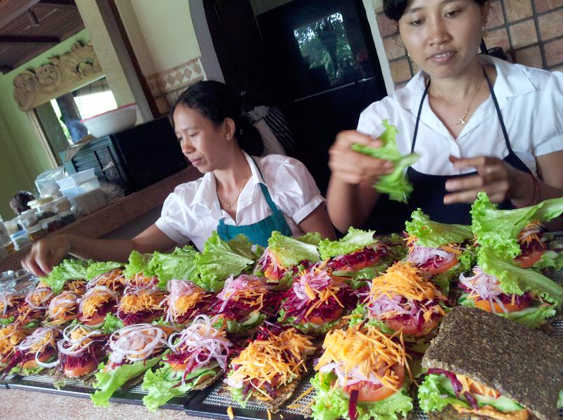 The preparing, advertising, sourcing, ordering & communicating are just the beginning .
The preparing, advertising, sourcing, ordering & communicating are just the beginning .
The list goes on and on.
As a team we divide and share the work load.
Also very crucial is communication with each other and carrying each other during a retreat.
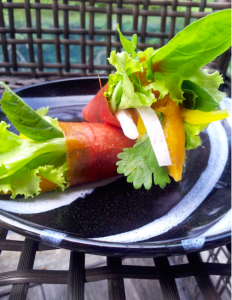 I like to always do something new for each retreat. For the last retreat I chose a theme fruit according to availability and what was current in season. It was dragon fruit with its amazing fuchsia-magenta colour.
I like to always do something new for each retreat. For the last retreat I chose a theme fruit according to availability and what was current in season. It was dragon fruit with its amazing fuchsia-magenta colour.
I used it in everything from fruit salads, wraps, cakes and desserts, drinks you name it – I just love creating menu’s around a fruit and its colour. It also brings so much more creativity into each recipe and dish.
So after many weeks of pondering, drum roll please; for our September retreat I have decided that Mangoes and their beautiful golden yellow colour will be the feature fruit!
Who doesn’t love its taste and texture? It’s one of the most cherished and loved fruits in the tropics. And I already can think of so many new ways on how to use it in the dishes I’ll be serving. Just wait and see. We are all in for a real treat.
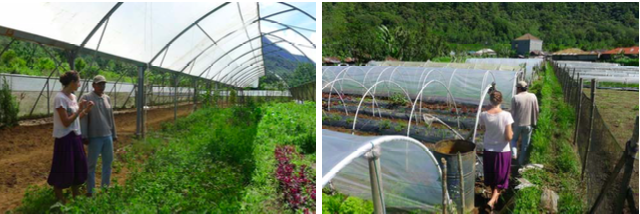
When I first began to get serious about my health and what I ate I started to look for the most accessible way to get the freshest produce. Living in the city the local health food shops didn’t quite stock the freshest choices. There just wasn’t the demand for it. And it was over priced for the amounts that I needed to sustain myself.
So I found the main organic distributors. The middle man. The companies that bought bulk from the farmers and then supplied the organic shops and businesses in town. The alarm would be set for 4am and with a 40 minute drive to the fringes of the city, this would be our weekly dedicated ‘shopping trip’.
Armed with a trolley the size of a mini platform we would shop alongside the health store owners in the huge market sheds. Most things had to be bought in bulk. So whatever was in season was eaten. We were coming home with boxes of cos lettuce, a variety of greens, an abundance of vegetable and fruits, perhaps it was oranges and cherries that week, and peaches and passion fruits the following week. Life was pretty simple, we might not have been eating a huge variety however what we were eating was all organic and it tasted fantastic.
And It made me happy knowing that I was one step closer to eating from the land.
Things have changed since then. I ended up moving closer to the farmer. But the farmers also have better access to us now. Today due to the demand, Farmers’ Markets have exploded in most places. It’s so good to see! We really have many more choices today, real opportunities to vote with our dollar to make a stand for what is most important to us.
In this video I share my joy and love for organic farming and knowing where my food comes from.
Its really living from mother earth to the table. And this gives me a sense of community and interaction that I never felt before, enriching my life even more.
See you in Bali on our next 100% organic retreat! www.artofliferetreats.com
Oksana
Hello! I’m a raw food chef from Italy.
I studied architecture in Venice and worked for 3-4 years in a company of light as a designer. I never liked the idea to spend my life in front of the computer and always had a passion for a healthy lifestyle. When I started to eliminate meat and fish, step by step I started to eat more raw food and my passion came alive.
I studied this philosophy with books and practices. And as I witnessed amazing benefits in my own life, I decided to start teaching others about raw food. Art and creativity has always been part of me and I try to put my inspiration on the plate, using lots of colors to encourage the appetite with different tastes.
Italy has always been known for good food. Italians love to eat. Italian tables are full of fresh flavored food. With every main meal there is always a large fresh salad. Italy is rich in diverse vegetables and fruits, Italians are known to eat a lot of vegetables. In recent years there is a growing interest in raw food, fruitarians, 80/10/10 diet – it’s alive everywhere.
There are many social gatherings and dinners based on raw foods. Raw food is now amongst nutritionists, natropaths, doctors, personal trainers who inform others about the many benefits of this lifestyle; people who tell their stories of sustainable consumption and healthy living.
This is a general Raw menu in Italy:
Breakfast: Juice of carrots, beetroot, apple and ginger with carrot cake.
Snack: Dried fruit
Lunch: Radicchio with dried tomatoes and sunflower seeds
Snack: Raw tart with blueberries
Dinner: Pappardelle pasta of carrots with ricotta seeds
Dessert: Peach sorbet
How Italy loves pasta! We are always in demand for recipe’s which will show how to make raw bread or a typical Italian dish (pasta, ravioli, rice). I want to present this recipe to you from the south of Italy “Taralli”.
Taralli is a special Apulian recipe, a genuine snack for adults and children. Taralli can be sweet or savory. Savory Taralli may be flavored with onion, garlic, sesame seeds, poppy seeds, fennel, pepper, chili or just salt. Taralli are oval shaped about 1 to 1.5 inches in circumference. This recipe is great when traveling, when you are not able to buy fruit.
This is a savory 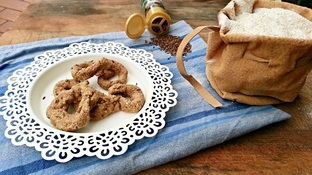 version:
version:
Ingredients:
1 cup millet flour (millet flour makes “Taralli” crispy)
1/2 cup pulp sesame
½ cup soaked buckwheat
1 cup of green olives
½ cup water or less
salt is not needed because of the salty olives
Put all the ingredients in a food processor until the dough forms into a rough mass. Pinch walnut-sized pieces of dough, roll first between your hands, and then against the wooden cutting board, so that the dough forms a thin rope, about ½ inch (1 cm) in diameter and 4” long (10 cm). Shape each rope into a ring, and seal the edges together by pressing lightly, then set aside the Taralli rings on a teflex sheets. Season with cumin and put in a dehydrator at 42 degrees for 12 hours or until perfectly crispy.
Enjoy the flavors of Italy!
Neli Todorov writes an active blog http://nelisraw.blogspot.it/ and shares news of workshops and events on her facebook page
